Pomodoro sauce is a light and sweet red sauce that’s smoother in texture than your average tomato sauce. Serve it with your favorite pasta, and top with freshly chopped basil and grated parmesan for the ultimate Italian meal.
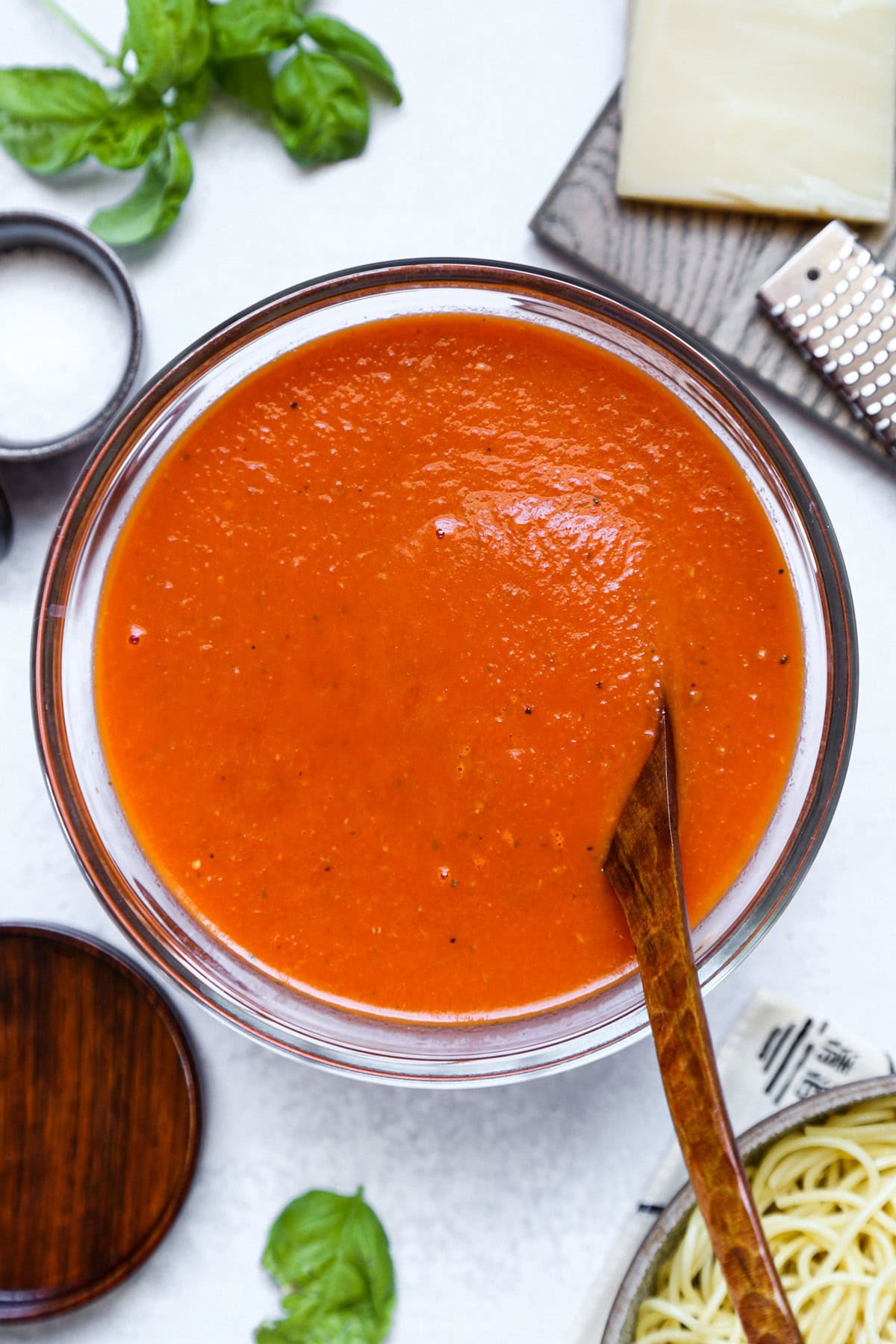
There’s something to be said for any any pasta sauce that tastes so good you end up eating with abandon.
In the process of cooking (and eating) pomodoro sauce over the years, I’ve ruined more than a few white t-shirts with sauce splatter.
Table of contents
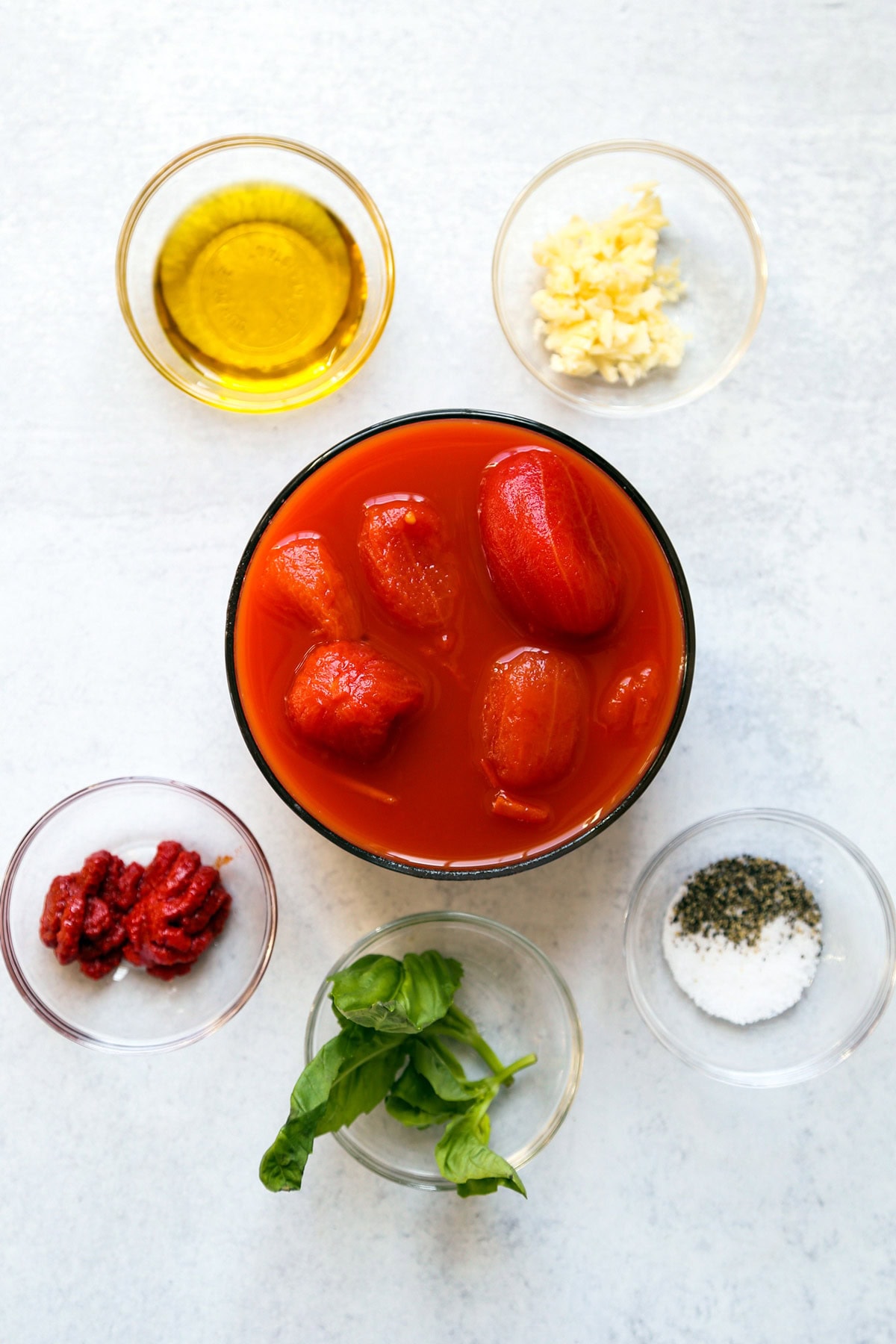
What is Pomodoro Sauce?
Pomodoro sauce is a classic Italian tomato sauce typically served with pasta. This blended sauce is smooth without any of the chunky properties you might find in other traditional pasta sauces. It contains few ingredients and has a comparatively short cooking time.
Pomodoro Sauce Ingredients
Scroll all the way down for the full recipe.
- Extra Virgin Olive Oil: When it comes to olive oil, using the good stuff is important. Extra virgin olive oil is oil from the first press – and is, accordingly, the least processed. While it isn’t always cheap, you’ll definitely taste the difference.
- Garlic: Four medium to large garlic cloves will have you sitting pretty. I like to chop my garlic super fine so that it almost becomes a mince. It perfumes the oil with its earthy pungency in a very short time when heated. Alternatively, you can use a fine grater or a microplane to ease the workload.
- Tomatoes: I’m using whole, peeled canned tomatoes for this pasta sauce recipe. When using canned tomatoes, I usually look for Bianco DiNapoli or San Marzano tomatoes – but that’s just a personal preference. However, you can also use fresh tomatoes if you prefer. If you go that route, simply follow the cooking instructions from this chilled Japanese tomato pasta recipe. Remember to score fresh tomatoes before boiling them so you can easily remove the skin.
- Tomato Paste: Canned tomato paste is essentially a tomato concentrate made by cooking tomatoes down (for several hours), then straining out the skin and seeds – and removing the water content. Adding a couple tablespoons will give this tomato sauce a rich boost.
- Fresh Basil: I use a sprig or two of basil while cooking the sauce – and remove it before the final blending step. When making pasta pomodoro, I like to add sprinkling of Parmesan cheese a couple fresh basil leaves to the plated dish.
- Salt and Pepper: You’ll need a few pinches of each. When it comes to salting most things in my kitchen, I prefer kosher salt.
Is Pomodoro Sauce Spicy?
No, pomodoro sauce is not spicy. It’s more in the garden fresh, savory and naturally sweet zone.
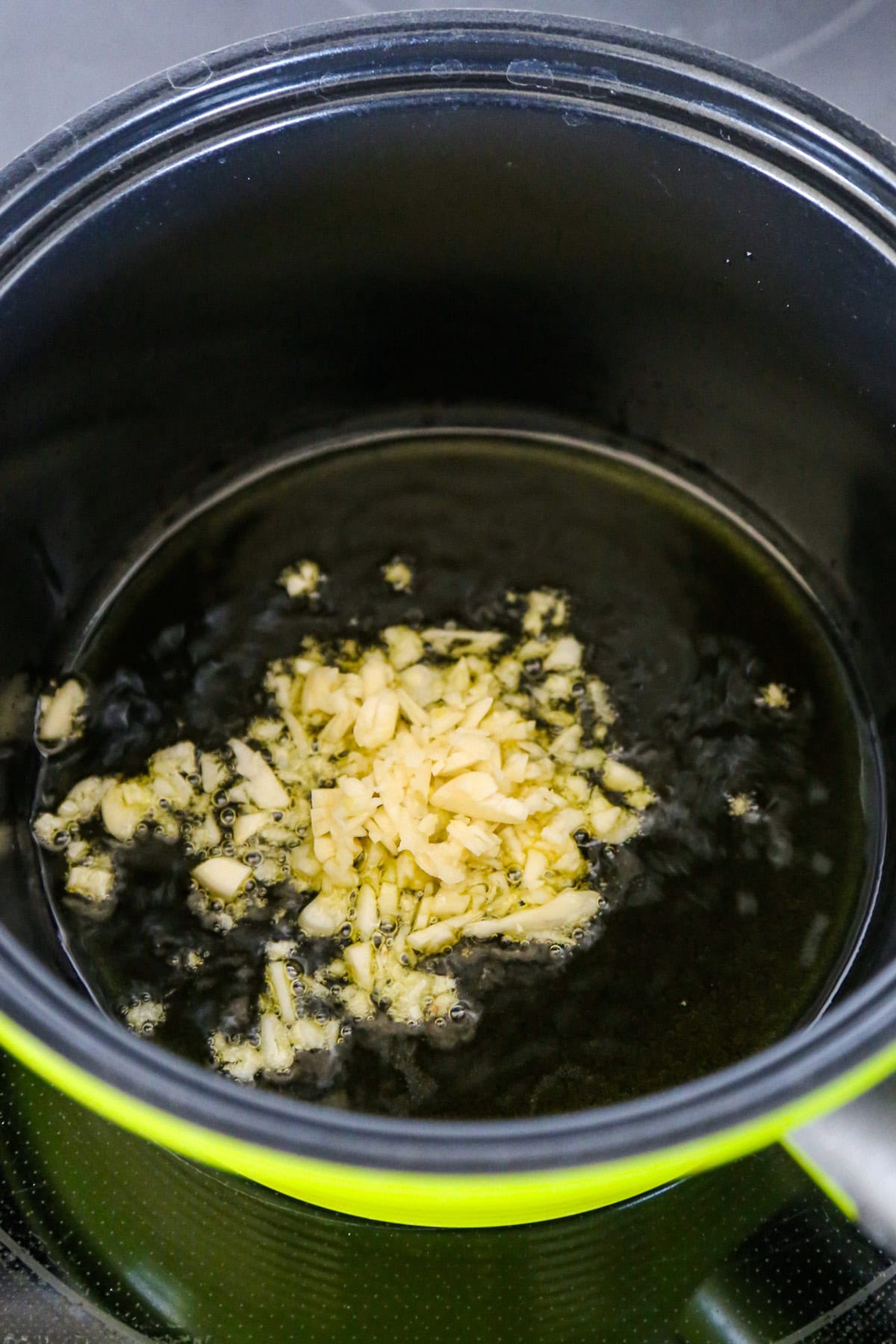
How to Make Pomodoro Sauce
- Gather all of your cooking tools and ingredients.
- Then get a medium sized pot going over medium heat – and add your olive oil and garlic.
- Cook the garlic for 1 to 2 minutes, until the garlic is fragrant. Then add your canned tomatoes, tomato paste, basil sprig – and salt and pepper. Stir and bring that mixture to boil.
- Once boiling, lower the heat so that the sauce is simmering. Cover the pot with a lid and cook for 20 minutes, until the tomatoes are soft enough that they easily break apart with a wooden spoon. If your sauce is watery at this point, you can pull the lid off and simmer for an additional 5 minutes.
- Turn the heat off, remove your basil sprig and transfer the sauce to a blender. Blend until smooth. Or, if you prefer, use an immersion blender to puree the sauce inside the cooking pot. Once you’ve got your preferred texture, serve over pasta (or see below for other uses).
If you’re preparing this pomodoro sauce recipe as a pasta sauce, prepare your noodles in a large pot of salted water according to the instructions on the box.
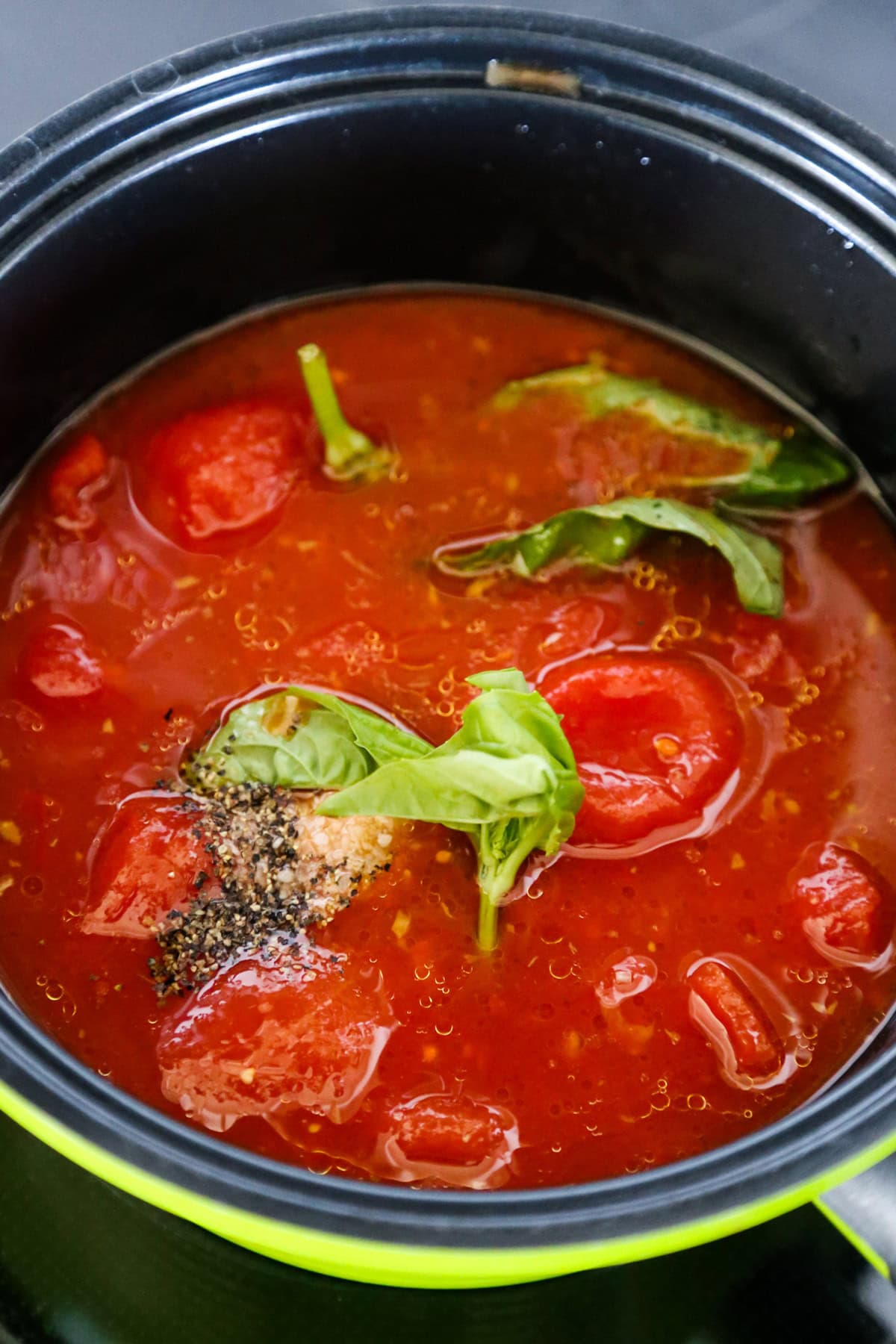
Pomodoro Sauce Uses
My absolute favorite use for this Italian tomato sauce is pasta al pomodoro. And while I usually make spaghetti pomodoro at home, this quick pasta sauce is an all purpose plug-and-play with:
- Linguine
- Fettuccini
- Gnocchi
OTHER USES FOR POMODORO SAUCE
- Homemade pizza sauce
- Sauce for eggplant Parmesan or chicken Parmesan
- For these Pan fried zucchini cakes with Parmesan and tomato sauce
- A sauce for spiralized veggies like zucchini, daikon radish, carrots or beets
- Sauce for a meatball sub or Italian sausage sandwich
- Ravioli sauce
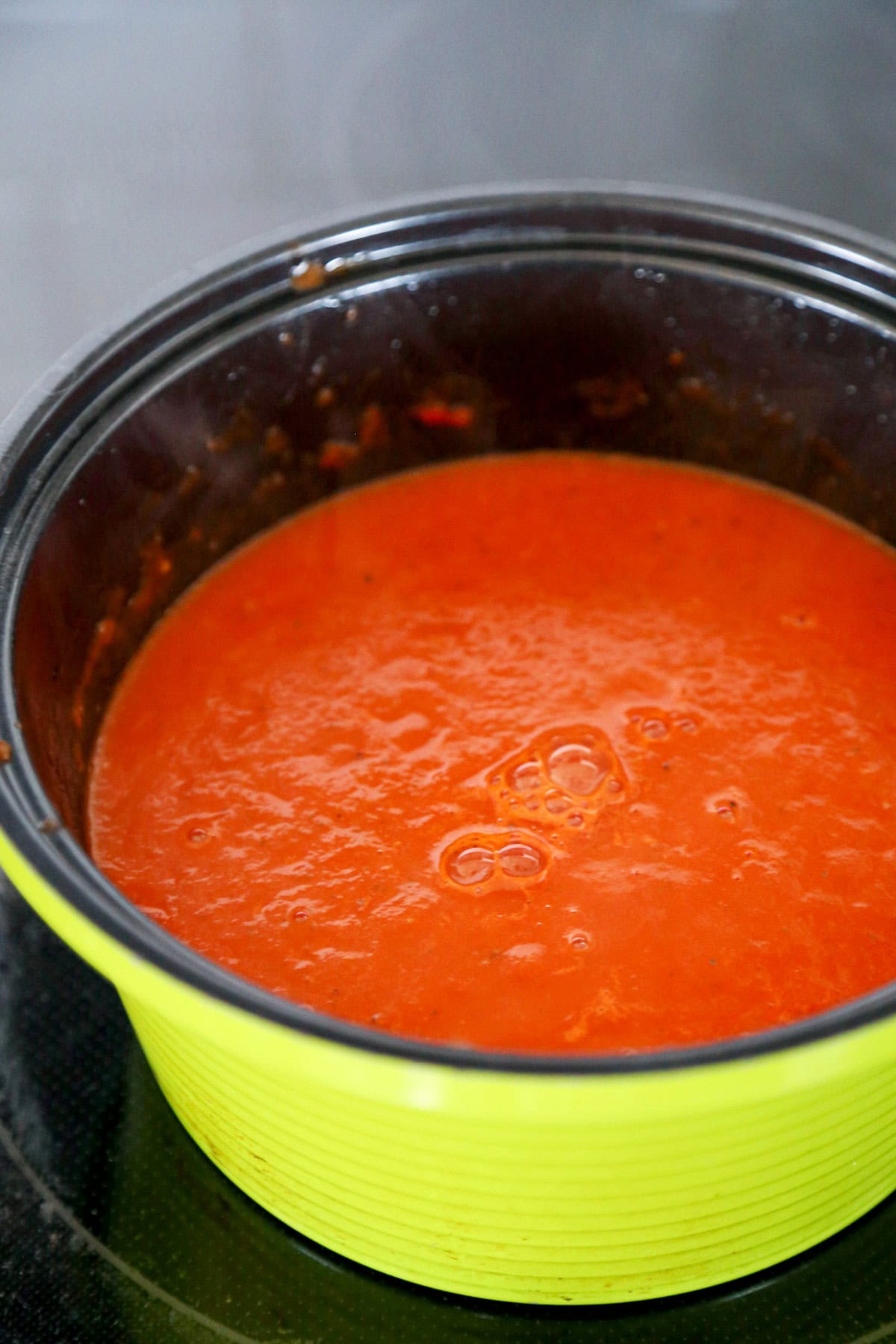
Pomodoro Sauce VS Marinara Sauce
While the ingredients list for both Italian pasta sauces tends to be very similar, there are a few differences mainly related to to texture (and color to a lesser extent).
- Pomodoro sauce is smooth and rich. It’s thick without being gloppy. The smoothness is due to the blending of the sauce. The longer you cook this Italian red sauce, the deeper and more pronounced that dark red hue becomes.
- Marinara sauce has chunks of tomato, yet has an overall thinner texture than pomodoro. While not a completely runny sauce, the difference is noticeable. In my experience, marinara tends to keep a super bright red color as well. Many recipes for marinara sauce will also call for the addition of oregano (not typically used in pomodoro).
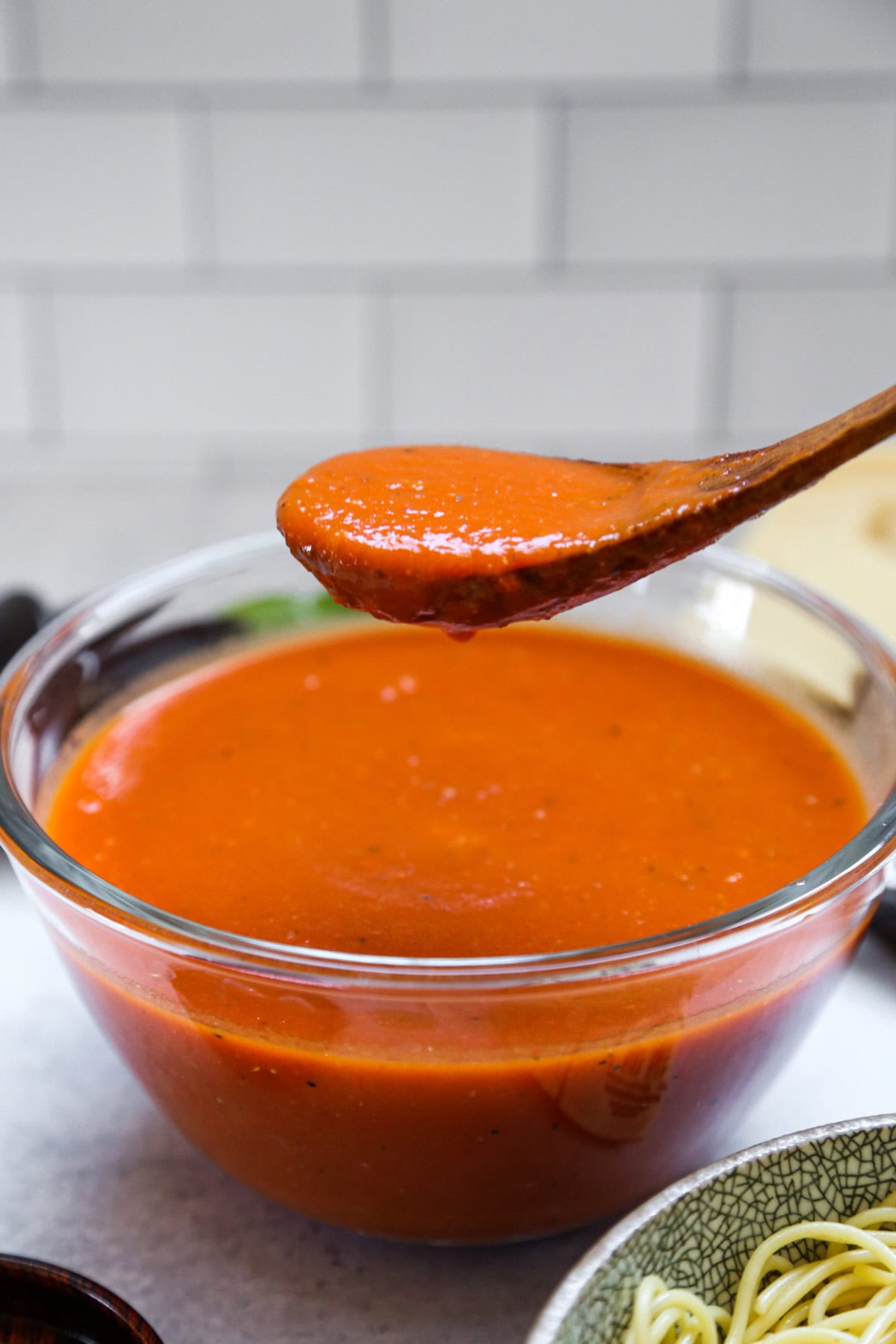
Storage
Fridge: Store the leftover sauce in an airtight container and refrigerate for up to 7 days.
Freezer: Once the sauce has cooled down to room temperature, divide it into single servings. Since it’s not a good idea to refreeze a thawed sauce a second time, this will keep you from wasting any. Use airtight containers or sealable plastic bags and freeze for up to 6 months.
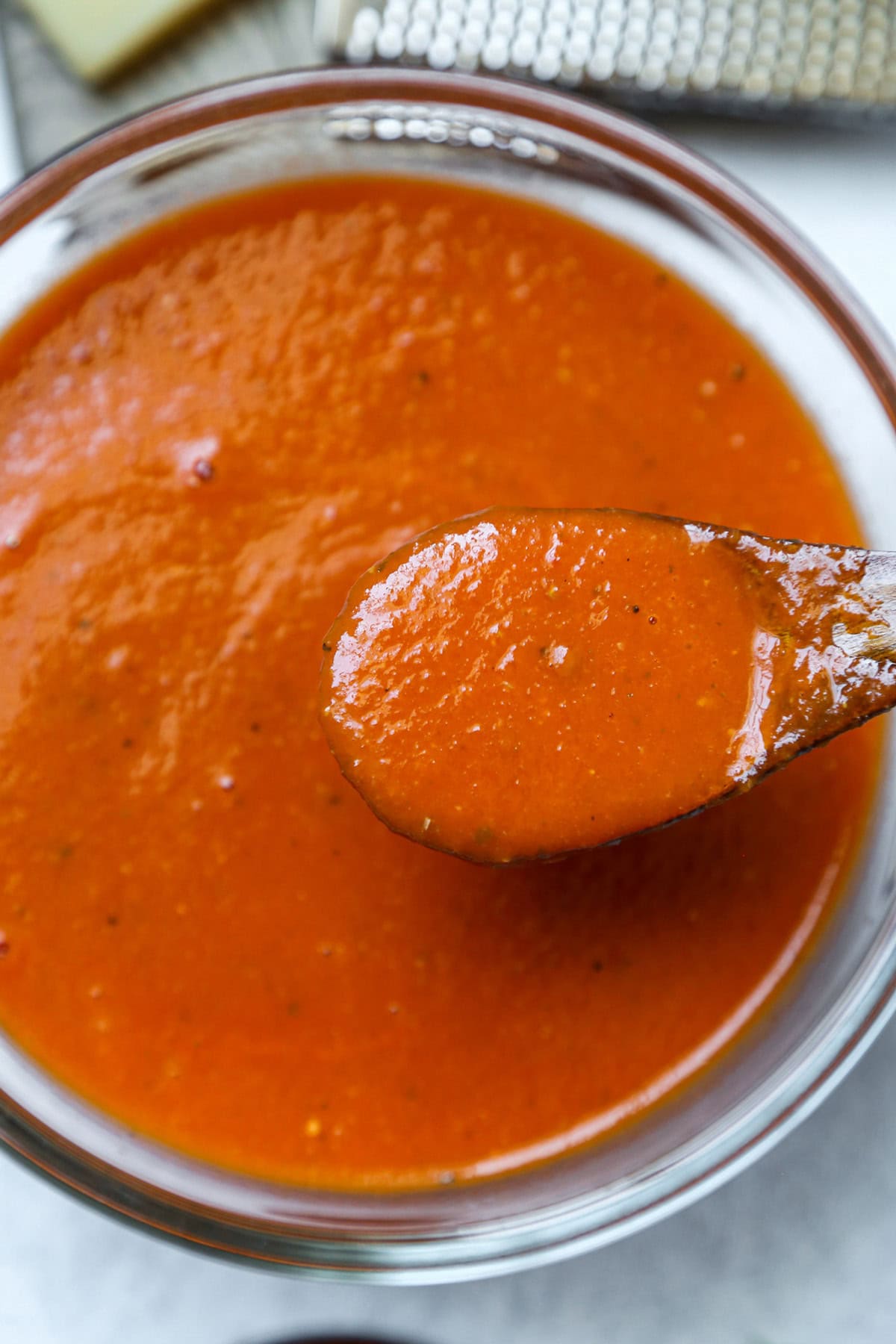
Did you like this pomodoro sauce recipe? Are there changes you made that you would like to share? Share your tips and recommendations in the comments section below!
Print
Pomodoro Sauce
- Prep Time: 10 minutes
- Cook Time: 27 minutes
- Total Time: 37 minutes
- Yield: 4 servings 1x
- Category: Sauce
- Method: Stove top
- Cuisine: Italian
- Diet: Vegan
Description
Serve this light, sweet, and tangy pomodoro sauce with your favorite pasta. Top with freshly chopped basil and grated parmesan for the ultimate Italian meal.
Ingredients
- 3 tablespoons extra virgin olive oil
- 4 garlic cloves, chopped
- 1 (28-ounce) can whole peeled tomatoes
- 2 tablespoons tomato paste
- 1 to 2 sprigs of fresh basil
- 1/2 teaspoon kosher salt
- Freshly ground black pepper, to taste
Instructions
- In a medium size pot over medium heat, add the garlic and olive oil.
- Cook the garlic for 1 to 2 minutes, until fragrant, and add the tomatoes, tomato paste, basil sprig, salt, and pepper.
- Bring to a boil and lower the heat to low, to a bubbling simmer. Cover with a lid and cook for 20 minutes, until the tomatoes are soft enough that you can easily break them with a spoon.
- Turn the heat off, remove the basil sprig, and transfer the sauce to a blender. Blend until smooth and serve with pasta. Alternatively, you can use a hand mixer and blend until smooth straight in the pot.
Notes
Save the sauce in an airtight storage container and refrigerate for 5 to 7 days.
Freezing: You can divide the sauce into individual servings and save them in airtight storage bags or containers. Freeze for up to 6 months.
Nutrition
- Serving Size: 1 serving
- Calories: 133
- Sugar: 6.1g
- Sodium: 388.7mg
- Fat: 11.1g
- Saturated Fat: 1.6g
- Unsaturated Fat: 1.3g
- Trans Fat: 0g
- Carbohydrates: 9.4g
- Fiber: 4.2g
- Protein: 2.1g
- Cholesterol: 0mg















I love Angel Hair Pasta with Pomodoro Sauce.